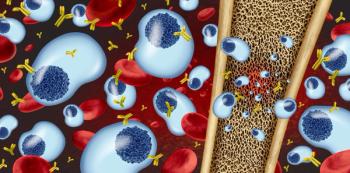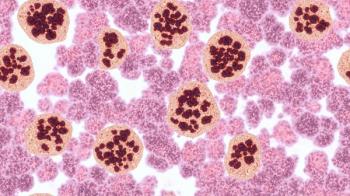
NLA 2025: Novel Therapeutic Approaches Show Promise for Targeted Reduction of Lp(a) in Patients With ASCVD
At the 2025 National Lipid Association (NLA) Scientific Sessions, Marlys L. Koschinsky, PhD, FNLA, discusses the role of Lp(a) in cardiovascular risk and the emerging therapies designed to target and lower Lp(a) levels.
As the understanding of cardiovascular risk continues to evolve, the focus on lipoprotein(a) (Lp[a]) as an independent and causal risk factor for atherosclerotic disease has grown. At the 2025 National Lipid Association (NLA) Scientific Sessions, Marlys L. Koschinsky, PhD, FNLA, discussed the evolving landscape of Lp(a)-targeted therapies. Koschinsky, a professor in the Department of Physiology & Pharmacology and a scientist at the Robarts Research Institute at the Schulich School of Medicine & Dentistry at The University of Western Ontario in London, Canada, outlined the pathophysiological basis of Lp(a) as a cardiovascular risk factor, the current therapeutic pipeline, and the pivotal cardiovascular outcomes trials (CVOTs) that will determine the clinical utility of these agents.
Lp(a) is a unique lipoprotein particle consisting of a low-density lipoprotein–like core attached to apolipoprotein(a) (apo[a]) via a disulfide bond, according to Koschinsky. Elevated Lp(a) levels, defined as greater than 50 mg/dL, are primarily determined by genetics and have been established as a strong, independent, and causal risk factor for atherosclerotic cardiovascular disease (ASCVD), including myocardial infarction, stroke, and peripheral arterial disease. Conventional lipid-lowering therapies, including statins and PCSK9 inhibitors, have only modest effects on Lp(a), typically resulting in reductions of 20% to 30%. According to Koschinsky, there remains a need for agents specifically designed to target and lower Lp(a) concentrations.
Koschinsky detailed the therapeutic approaches under development, primarily focusing on 2 therapeutic categories: antisense oligonucleotides (ASOs) and small interfering RNAs (siRNAs). Both ASOs and siRNAs act at the level of mRNA to reduce the hepatic synthesis of apo(a). The leading ASO agent in development is pelacarsen (AKCEA-APO[a]-LRx; Novartis and Ionis Pharmaceuticals), while key siRNA agents include olpasiran (AMG890; Amgen), lepodisiran (LY3819469; Eli Lilly and Company), and zerlasiran (SLN-360;Silence Therapeutics).
Pelacarsen, an ASO targeting apo(a) mRNA, is currently being evaluated in the pivotal phase 3 Lp(a)HORIZON trial (NCT04023552), a randomized, double-blind, placebo-controlled CVOT enrolling more than 8300 patients with established ASCVD and Lp(a) levels at 70 mg/dL or higher.2 The primary end point is time to first major adverse cardiovascular event (MACE), and while the trial’s completion was initially expected in 2025, it has been extended to February 2026 to ensure adequate event accrual. Phase 2 data demonstrated that pelacarsen can lower Lp(a) levels by approximately 80%, with no significant safety signals, positioning it as a potential first-in-class therapy pending CVOT results.
The siRNA landscape is similarly promising. Olpasiran, currently in the phase 3 OCEAN(a) trial (NCT05581303), has completed recruitment of over 7200 patients with ASCVD and Lp(a) at 200 nmol/L or higher.3 Phase 2 results showed an impressive 94% reduction in Lp(a) at 36 weeks following 75 mg dosing every 12 weeks. The trial’s primary end point is time to coronary heart disease death, myocardial infarction, or urgent revascularization, with completion expected in December 2026.
Lepodisiran, another siRNA, is under evaluation in the phase 3 ACCLAIM-Lp(a) trial (NCT06292013), which aims to enroll 12,500 participants with either established ASCVD or high-risk primary prevention profiles.4 Inclusion criteria include Lp(a) at 175 nmol/L or higher, and the primary end point is time to first MACE-4 event. Phase 2 data indicated a 94% reduction in Lp(a) at 180 days post-dose for the 400 mg group, again with no significant safety issues. Notably, the ACCLAIM-Lp(a) trial population includes both secondary and high-risk primary prevention cohorts, broadening the potential patient population for this therapy.
Zerlasiran, another siRNA agent, has completed the phase 2 ALPACAR-360 study (NCT05537571), which enrolled 172 participants with Lp(a) at 125 nmol/L or higher and elevated ASCVD risk.5 The 300 mg dose administered every 16 weeks resulted in a 96.4% reduction in Lp(a) at week 36. However, the phase 3 program is currently on hold.
Additionally, Koschinsky noted that the small molecule inhibitor muvalaplin (LY3819469; Eli Lilly and Company) represents an alternative, non-RNA-based approach. Koschinsky explained that muvalaplin targets the production of Lp(a) through a mechanism distinct from ASO and siRNA therapies. Phase 1 data (NCT04472676) show muvalaplin achieves a maximum placebo-adjusted Lp(a) reduction of 63% to 65%, with 93% of participants reaching Lp(a) levels below 50 mg/dL (125 nmol/L), with similar effects at daily doses of 100 mg or more.1,6,7 Notably, no safety or tolerability concerns were identified, suggesting potential as an oral option for patients who may prefer non-injectable therapies. Following the completion of the phase 1 trial, muvalaplin is now being evaluated in the ALPACA phase 2 trial (NCT05565742), which has completed recruitment.1,8
Koschinsky noted it will be important to assess in forthcoming CVOTs whether the substantial Lp(a) reductions observed with these agents translate into meaningful reductions in cardiovascular events. While genetic studies and epidemiological data have long implicated Lp(a) as a causal factor in ASCVD, Koschinsky explained that the field awaits definitive trial results to confirm that lowering Lp(a)—rather than its correlation with other risk factors—will improve outcomes. These trials will also provide insights into the magnitude of Lp(a) reduction required for clinical benefit and whether there are any unintended consequences of such dramatic lowering, such as effects on wound healing, thrombosis, or immune responses.
“These trials are going to be critical for us to be able to address what we call in the field the Lp(a) hypothesis. This hypothesis [posits] that specific, substantial lowering of Lp(a) will be beneficial in reducing cardiovascular disease events,” Koschinsky said during the NLA presentation. “Studies with different compounds that may help to clarify what degree of lowering is necessary. That is really an important component in field… We just don't know how much lowering is enough, and that's what we're going to find out. It's going to be a great milestone for our field [once we do], and it’ll really catalyze our understanding of how Lp(a) can contribute to cardiovascular disease.”
REFERENCES
1. Koschinsky ML. Lp(a) Inhibitors: Emerging Therapies Targeting Lp(a) and Associated Outcomes. NLA Scientific Sessions; Miami, Florida; May 29-June 1.
2. Assessing the Impact of Lipoprotein (a) Lowering With Pelacarsen (TQJ230) on Major Cardiovascular Events in Patients With CVD (Lp(a)HORIZON). Clinicaltrials.gov. Updated March 14, 2025. Accessed May 31, 2025. https://clinicaltrials.gov/study/NCT04023552?term=NCT04023552&rank=1
3. Olpasiran Trials of Cardiovascular Events and Lipoprotein(a) Reduction (OCEAN(a)) - Outcomes Trial. Clinicaltrials.gov. Updated November 12, 2024. Accessed May 31, 2025. https://clinicaltrials.gov/study/NCT05581303?term=NCT05581303&rank=1
4. A Study to Investigate the Effect of Lepodisiran on the Reduction of Major Adverse Cardiovascular Events in Adults With Elevated Lipoprotein(a) - ACCLAIM-Lp(a). Clinicaltrials.gov. Updated April 18, 2025. Accessed May 31, 2025. https://clinicaltrials.gov/study/NCT06292013?term=NCT06292013&rank=1
5. Evaluate SLN360 in Participants With Elevated Lipoprotein(a) at High Risk of Atherosclerotic Cardiovascular Disease Events. Clinicaltrials.gov. Updated July 31, 2024. Accessed May 31, 2025. https://clinicaltrials.gov/study/NCT05537571?term=NCT05537571&rank=1
6. A Study of LY3473329 in Healthy Participants. Clinicaltrials.gov. Updated December 14, 2021. Accessed May 31, 2025. https://clinicaltrials.gov/study/NCT04472676
7. Nicholls SJ, Nissen SE, Fleming C, et al. Muvalaplin, an Oral Small Molecule Inhibitor of Lipoprotein(a) Formation: A Randomized Clinical Trial. JAMA. 2023;330(11):1042-1053. doi:10.1001/jama.2023.16503
8. A Study of LY3819469 in Participants With Elevated Lipoprotein(a) [Lp(a)]. Clinicaltrials.gov. Updated May 28, 2025. Accessed May 31, 2025.https://clinicaltrials.gov/study/NCT05565742?term=NCT05565742&rank=1
Newsletter
Stay informed on drug updates, treatment guidelines, and pharmacy practice trends—subscribe to Pharmacy Times for weekly clinical insights.




















































































































































































































